Stone carving - the timeless art of historic architecture
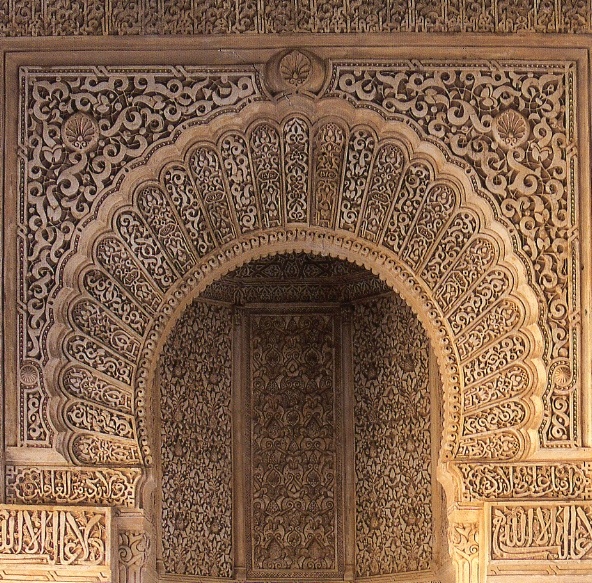

What is stone carving?
Stone carving is one of the oldest and finest architectural arts, as it has been used since ancient times to give unique and lasting artistic touches to buildings and monuments. This art consists of carving and shaping stones with geometric, botanical, and linear motifs, making it an essential element in decorating facades, columns, arches, and walls across different civilizations.
Stone carving is carried out by hand using precise tools and relies on marble, granite, and limestone as the main materials, which gives it durability and beauty that does not fade over time.
The history of stone carving in world architecture
In Islamic and Andalusian architecture
The art of stone carving developed in the Islamic era, reaching its peak in Andalusia and Morocco, where it was characterized by intricate geometric motifs, botanical inscriptions, and carved Arabic calligraphy. The splendor of this art can be seen in the Alhambra Palace in Granada, the Qarawiyyin Mosque in Fez, and the palaces of Marrakech, where the stone details reflect the creativity and precision of the craftsmanship.
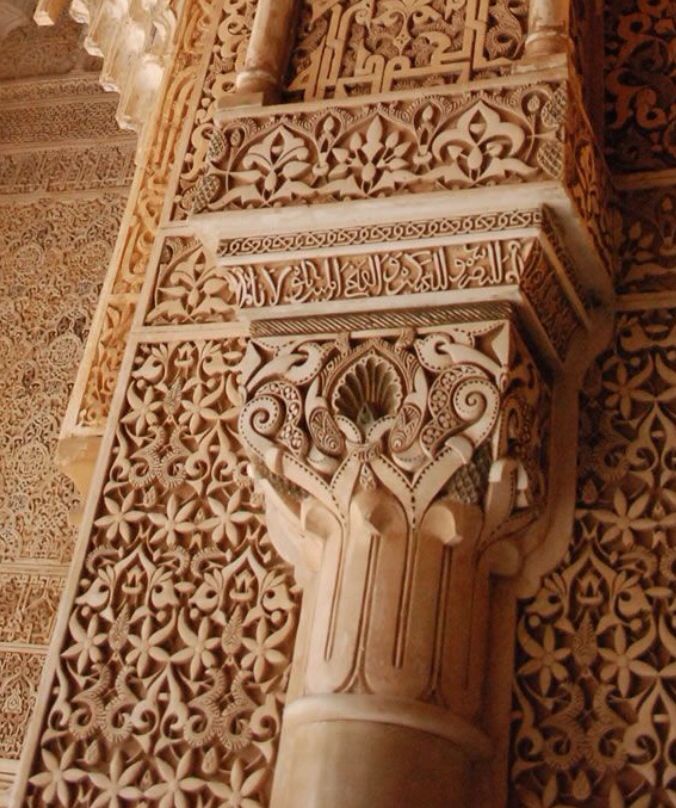
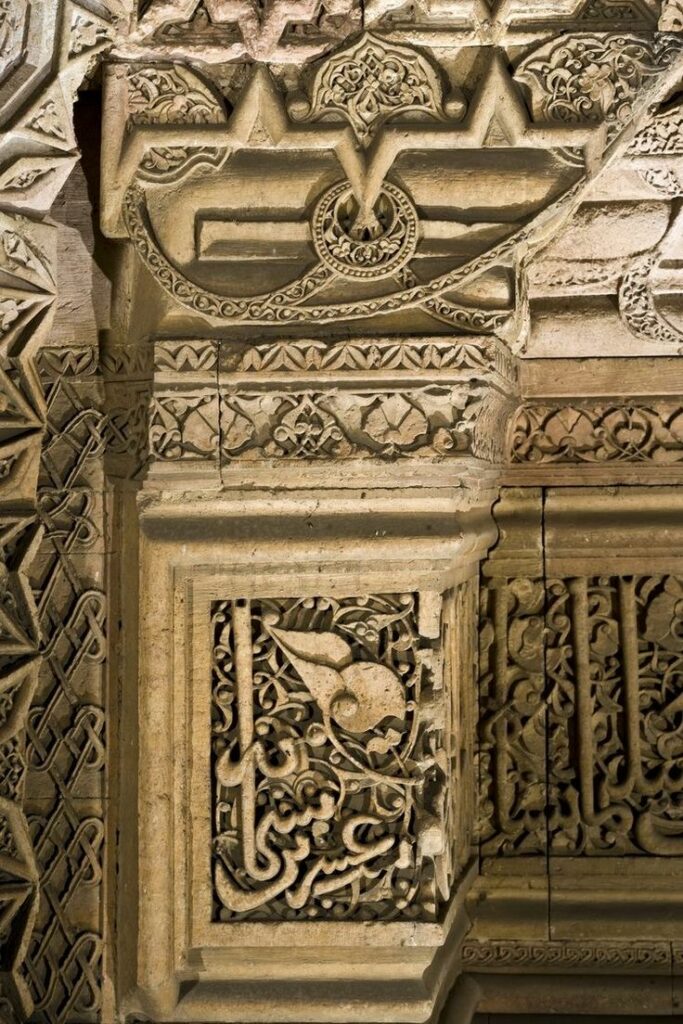
Ottoman and Persian architecture
Ottoman and Persian architecture was characterized by the use of intricate carving on stone and plaster to decorate minarets, domes, and entrances. These engravings were characterized by stunning decorative details and Koranic lines that added a spiritual dimension to mosques and mausoleums.
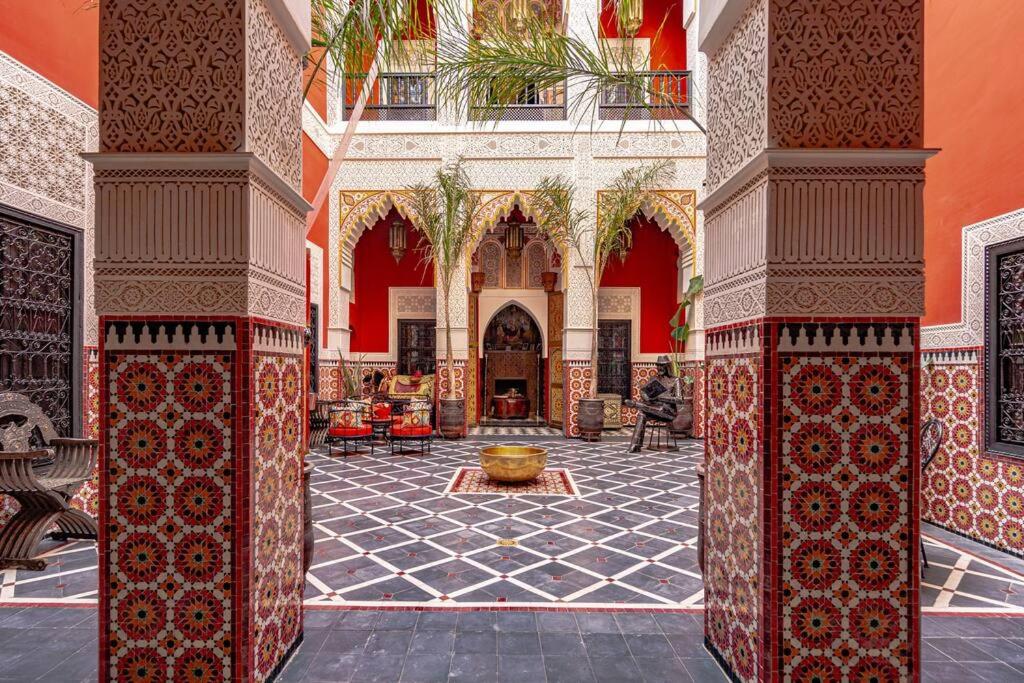
Stages of stone carving
The stone carving process goes through multiple stages to ensure quality and accuracy, including:
Choosing the right type of stone according to hardness, color, and consistency with the rest of the architectural elements
Designing geometric, botanical, or linear motifs to suit the desired architectural character
Carving by hand or using modern techniques such as lasers to get the finest details
Polishing and smoothing to emphasize the beauty of the patterns and ensure the clarity of the fine details
Final installation in a way that harmonizes with the rest of the architectural elements to ensure homogeneity and durability
Choosing the right type of stone according to hardness, color, and consistency with the rest of the architectural elements
Designing geometric, botanical, or linear motifs to suit the desired architectural character
Carving by hand or using modern techniques such as lasers to get the finest details
Polishing and smoothing to emphasize the beauty of the patterns and ensure the clarity of the fine details
Final installation in a way that harmonizes with the rest of the architectural elements to ensure homogeneity and durability
Why do you choose stone carving in your project?

Timeless architectural beauty
adds a sophisticated artistic touch that lasts for centuries
Flexibility in design
it can be implemented in a variety of styles to suit different architectural styles
Hardness and durability
withstands climate changes and maintains its details over time
Artistic and cultural value
reflects the originality of civilizations and enhances the identity of buildings
The most prominent uses of stone carving
- Decorating exterior facades with elegant architectural motifs that mimic the historical character
- Highlighting arches and entrances through elaborate geometric and decorative patterns
- Decorating stone columns and capitals to give buildings a luxurious artistic touch
- Design engraved stone panels with Quranic verses, poetic verses, or historical inscriptions
- Adding aesthetic touches to mosques and palaces through carved details that reflect the ancient heritage
- Decorating graves and mausoleums with elegant carvings with a religious or historical theme
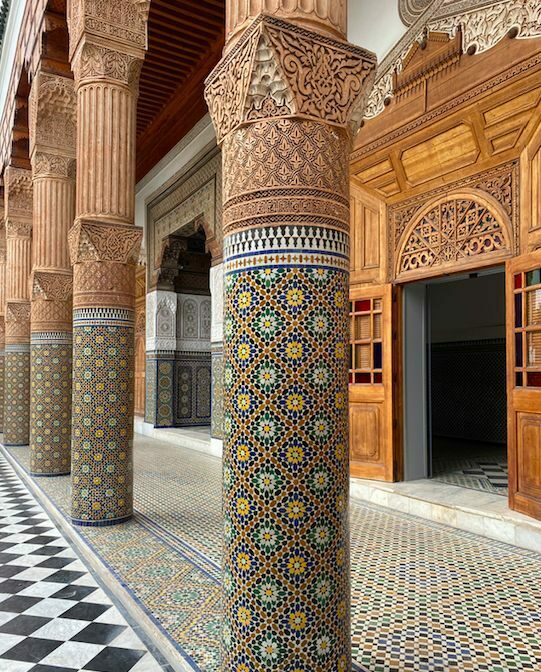
Our expertise in the art of stone carving
We have a team of artisans who specialize in traditional and contemporary stone carvings, incorporating modern techniques to ensure the highest degree of accuracy and beauty. Whether you want to design a luxurious façade, restore an ancient building, or create delicate Islamic inscriptions, we provide you with works of art that reflect the spirit of timeless architecture.
